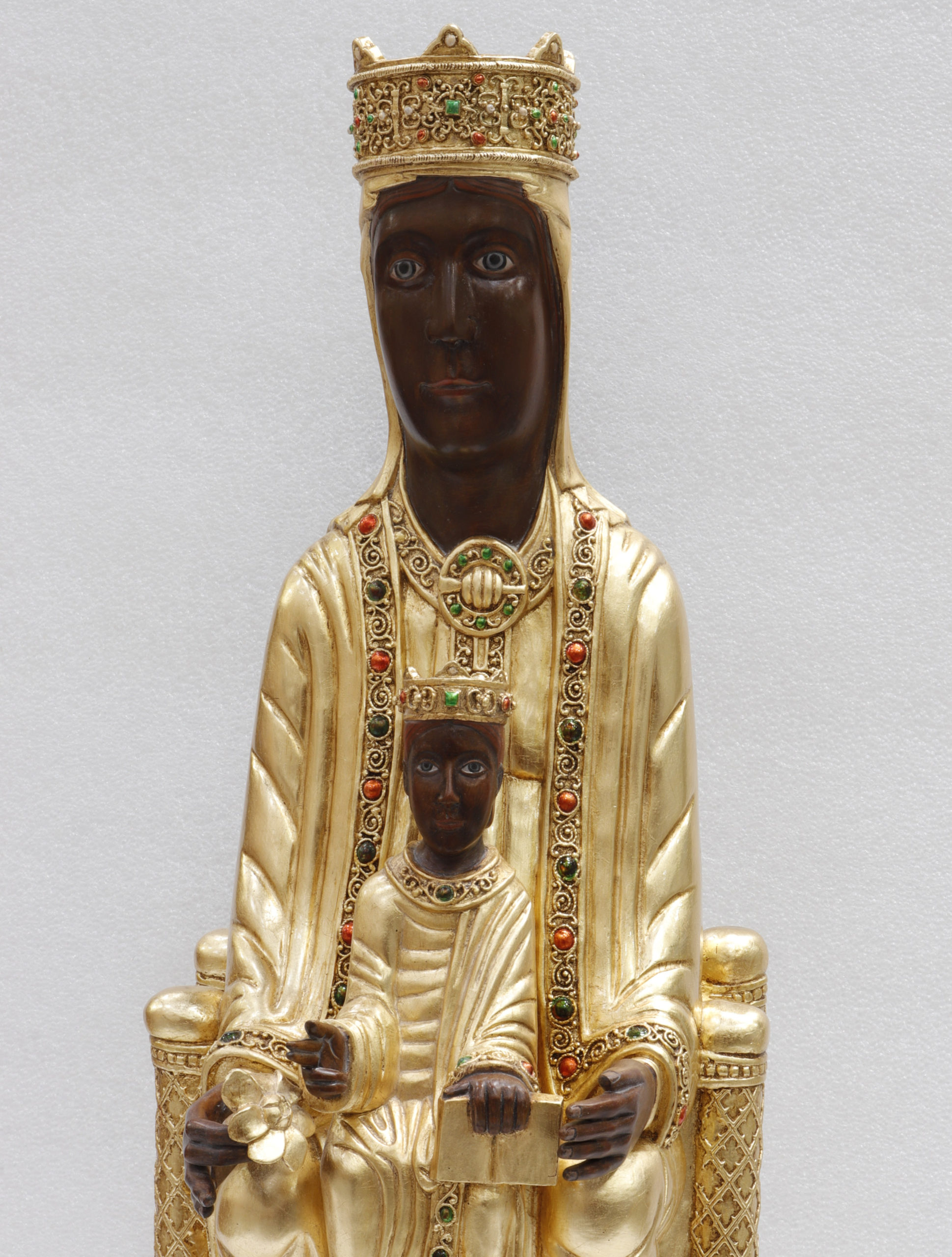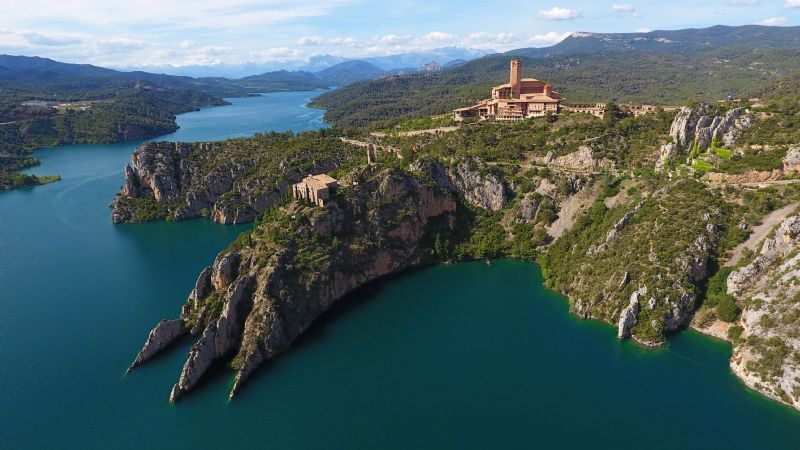A few weeks ago, the ceremony of enthronement of the image of Our Lady of the Angels of Torreciudad in a parish in Ourense.
The carving, made in our workshops in Alcalá de Henares, has been done with special care to respect as much as possible the configuration of the original image.

Image of the Virgin of Torreciudad, 86 cm, made in Talleres de Arte Granda.
THE HISTORY OF THE SANCTUARY OF NUESTRA SEÑORA DE TORRECIUDAD
The image of the Virgin of Torreciudad is a Romanesque carving dating from the 11th century. For centuries it has been venerated in the Ribagorza region of Alto Aragon since she was enthroned in 1084 in a hermitage next to the Cinca River.
This invocation was of special devotion on the part of Saint Josemaría Escrivá (Basrbastro, 1902)The founder of Opus Dei, who when he was 2 years old was taken by his parents to the hermitage to be offered to Our Lady, after he was cured of a serious illness. In 1975, under the impulse of this saint, a new sanctuary built over the hermitage opened its doors to be a place of pilgrimage for the faithful from all over the world.

The sanctuary of Torreciudad. Source: Aragon Network
THE ORIGINAL SIZE
The size belongs to the iconographic group of the Sedes SapienciaeThe prototype of which was the image of Clermont, dating from the tenth century and consisting of a wooden image plated in gold, according to the inventories of the Cathedral of Clermont. This mode of representation, typical of the Middle Ages, represents Christ in Majesty, and the Virgin seated with the child on her lap. The expression is hieratic, looking straight ahead and with a serious and solemn attitude. The child usually appears with his right hand raised, blessing the world, and with a book or the sphere of the world in the other. They are simple, devoid of any sentimentalism, and reflect the simplicity of the piety of the time and contain a rich doctrinal content.
The wood from which it was made belongs to the genus Populusgenerally known as poplar and probably to the nigra species, which has been acquiring a brownish tone over the centuries.The result is particularly beautiful, due to humidity and other damages. Some of them seem to have received a bath of varnish or other color protective substance, making them more resistant to the passage of time. Although the image was later polychromed, the passage of time has also caused it to disappear, exposing the dark varnish.
OUR CARVING OF THE VIRGIN OF TORRECIUDAD
The part modeling The workshop was held in the first place in claykeeping fidelity to the original image, even in the size of the image. (86 cm) which, in spite of its rigidity, presents some naturalistic features.
The Virgin's shoulders are turned slightly to the right, as is her head. oval face, pronounced cheekbones and almond-shaped eyes rest under two shallow arches. The nose, with flat lateral walls, is well defined over a perfectly shaped mouth, which a discreet smile. The Child is also slightly displaced to the right, on the Virgin's left leg, delayed with respect to the opposite one in order to support the weight.
The modeling was also performed imitating the original folding of the lower part of the robe and the throne, which is slightly inclined forward and adorned with bases and knob-shaped finials, sits on four cylindrical uprights.
The piece was subsequently reproduced in resinThe material is resistant to humidity conditions and possible fungus attacks, and was polychromyOn the one hand, the gold-plated part of the original, which was made by gilding it with German goldThe other is the visible part of the wood, which was made tol oil with glazing technique. To enrich the piece, colorants were used on shellac to imitate the stones set in the original piece.
Here, some images of the realization process:
